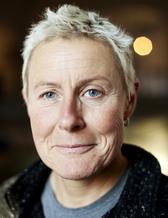The Biographical Dictionary of Swedish Women (SKBL) was launched with much fanfare exactly three years ago. Since then, the database's features have been improved and new educational search aids have been added. Most importantly of all: there are now twice as many women featured in the dictionary as there were at launch - and just in time for International Women's Day. 2,000 women whose lives and achievements have in many cases not previously been visible in the annals of history.

When the Biographical Dictionary of Swedish Women (SKBL) was launched, it included 1,000 women in its database. The project was subsequently awarded a grant by Riksbankens Jubileumsfond to support its work over the course of two years in continuing the development of the database and doubling the number of women featured.
"There are now some new educational tools available. There is a chronological feature with a time line that allows you to specify a time period and retrieve all women in the database from that particular time span. We also have a map of places of birth, places of death and so on," says Maria Sjöberg, Professor of Historical Studies and the project's manager.
If you are interested in a particular era, it is now possible to pull up all women in the database who were alive at that time - to the extent that we can determine this.
The map feature allows you to zoom in and out, and you can sort the women based on where they were born, died, were educated, worked or lived. The map visualises the women's geographic mobility over the course of their lives.
"It illustrates a mass migration to Stockholm. There were many women who weren't born in Stockholm but did die there," says Maria Sjöberg.
The response to the Biographical Dictionary of Swedish Women has been significant, and it has been used a lot by schools and interested members of the public from its launch. Last year, in 2020, the Dictionary recorded around 3.5 million page views. Furthermore, SKBL is used in research and there are now multiple publications where SKBL is cited as a source.
The project started in 2016 and it will reach the end of its current phase at the end of March when its project funding expires.
"Now all that remains to be done is low-intensity work, adding to and correcting the database. Librarians in the University Library will continue to add keywords until August, and all the material is currently being translated into English."






